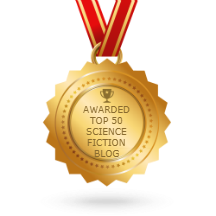 There's no sign of a Dudley Dursley spin-off yet, although surely it's only a matter of time. However J.K.Rowling's "novel for adults" The Casual Vacancy can at least act as a temporary fix - it's set amongst an entire town of Dursley-ish neurotic and insecure middle-classers, desperately trying to keep their idyllic village separate from the nearest council estate. Small-mindedness doesn't get any smaller than UK local politics, and the novel begins with the death of a much-loved councillor who had championed the cause of the estate.
There's no sign of a Dudley Dursley spin-off yet, although surely it's only a matter of time. However J.K.Rowling's "novel for adults" The Casual Vacancy can at least act as a temporary fix - it's set amongst an entire town of Dursley-ish neurotic and insecure middle-classers, desperately trying to keep their idyllic village separate from the nearest council estate. Small-mindedness doesn't get any smaller than UK local politics, and the novel begins with the death of a much-loved councillor who had championed the cause of the estate.At times this still seems like a children's novel: the village teenagers play a large role and part of the story is told from their viewpoint, including their own understanding of their parents' lies, secrets and scandalous dealings. The characters and their long trains of thought are undeniably Rowling - perhaps this is a key element of a Rowling-trademark style. Also despite the many topical issues that crop up, there's the sense of writing for a readership from a previous age that also permeated the boarding-school world of Harry Potter.
The main purpose of this novel seems to be for J.K. Rowling to let off some steam - free from the constraining world of children's literature she can write freely about sex, drugs, death and the unfairness of the adult world, leading to a traumatic climax and ending that I doubt she could have pulled off for Potter. Or could she? Other writers such as Michael Morpurgo and Jacqueline Wilson have successfully written children's fiction that brings in adult realities.
I thought this was an excellent although perhaps not outstanding novel. It's certainly enjoyable and occasionally shocking.
















